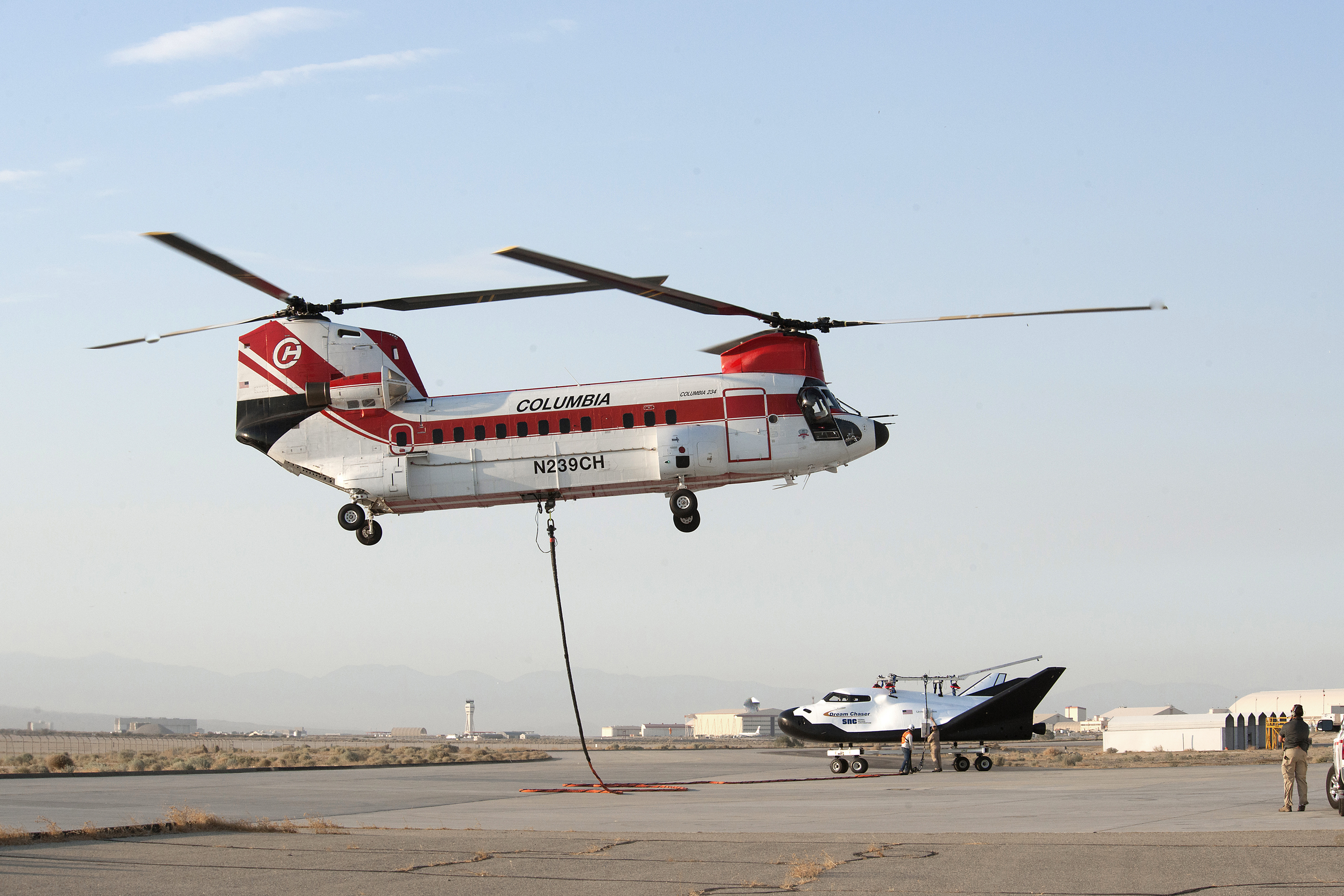Watch Sierra Nevada's Dream Chaser Captive Carry Test in NASA Video
Sierra Nevada Corporation's privately built Dream Chaser space plane passed a major milestone on Aug. 30 with a captive carry test over California's Mojave Desert, and now you can see exactly how it looked in a new NASA video.
The new video, released by NASA on Sept. 25, shows a prototype for an uncrewed Dream Chaser hanging from a Columbia 234-UT helicopter as the spacecraft is carried to the same altitude it will need to be for an upcoming free-flying drop test. The Aug. 30 test carried the Dream Chaser to an altitude of about 12,500 feet (3,810 meters) and was based out of NASA's Armstrong Flight Research Center, which is located at Edwards Air Force Base in the Mojave Desert.
"The captive carry is part of a series of tests for a developmental space act agreement SNC has with NASA's Commercial Crew Program," NASA officials wrote in a video description. "The data from the tests help SNC validate the aerodynamic properties, flight software and control system performance of the Dream Chaser."

Sierra Nevada is building the Dream Chaser space plane to carry NASA cargo to the International Space Station as part of the agency's Commercial Resupply Services 2 (CRS-2) program. Under the NASA deal, Sierra Nevada will fly six uncrewed cargo delivery flights for the space agency by 2024. Two other companies, SpaceX and Orbital ATK, also have CRS-2 contracts to fly NASA cargo to the space station.
The Dream Chaser space plane looks much like a miniature space shuttle, but one-quarter the size of NASA's winged spaceships. Dream Chaser is 30 feet long (9.1 m) and designed to carry up to 12,125 lbs. (5,500 kilograms) of cargo to the space station. The spacecraft will launch into orbit atop an Atlas V rocket built by the United Launch Alliance.
The first Dream Chaser flight to the space station is expected to launch in 2020.
Email Tariq Malik at tmalik@space.com or follow him @tariqjmalik and Google+. Follow us @Spacedotcom, Facebook and Google+. Original article on Space.com.
Get the Space.com Newsletter
Breaking space news, the latest updates on rocket launches, skywatching events and more!
Join our Space Forums to keep talking space on the latest missions, night sky and more! And if you have a news tip, correction or comment, let us know at: community@space.com.

Tariq is the Editor-in-Chief of Space.com and joined the team in 2001, first as an intern and staff writer, and later as an editor. He covers human spaceflight, exploration and space science, as well as skywatching and entertainment. He became Space.com's Managing Editor in 2009 and Editor-in-Chief in 2019. Before joining Space.com, Tariq was a staff reporter for The Los Angeles Times covering education and city beats in La Habra, Fullerton and Huntington Beach. In October 2022, Tariq received the Harry Kolcum Award for excellence in space reporting from the National Space Club Florida Committee. He is also an Eagle Scout (yes, he has the Space Exploration merit badge) and went to Space Camp four times as a kid and a fifth time as an adult. He has journalism degrees from the University of Southern California and New York University. You can find Tariq at Space.com and as the co-host to the This Week In Space podcast with space historian Rod Pyle on the TWiT network. To see his latest project, you can follow Tariq on Twitter @tariqjmalik.









